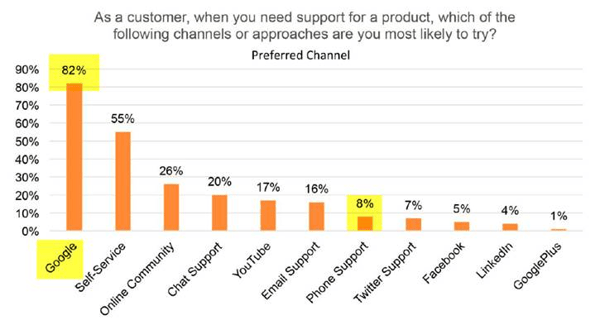
Colin Bassant
Service management consultant
How do you measure customer satisfaction and customer loyalty? This is trickier than you might think! I believe there is a difference between customer satisfaction and customer loyalty. I’ve discussed the fact that Customer Satisfaction (CSAT) and the Net Promotor Score (NPS) aren’t good predictors of customer loyalty. In this blog post, I’m sharing a method that works well for predicting both customer satisfaction and customer loyalty: the Customer Effort Score (CES).
The difference between consumers and customers at work
Before I start throwing around numbers and showing graphs, please ask yourself the following questions:
- ‘Do I ever order groceries online?’
- ‘Do I ever book a holiday online?’
- ‘Do I ever buy something online?’
Odds are you answered ‘yes’ to at least one of these questions. Lots of people opt out of visiting shops these days; instead, they simply buy the things they need online. Doing so apparently makes us happy! But if that’s the case, why do we often get stuck in the old way of doing things at work? We are forced to call, send emails, or report to a desk to get things done. If any type of self-service has been implemented, this is often considered a step back in terms of quality. Odd, since consumers prove every day that self-service and quality can go hand in hand!
Customer Effort Score
The Customer Effort Score (CES) in particular plays a large role in self-service. This score indicates the degree of effort customers have to make themselves, to solve issues for example. The score also provides insights into which elements in terms of customer effort could be improved upon. A high score indicates that customers have to put in a lot of effort, whereas a low score indicates it takes little effort for customers to take care of things via self-service. As it turns out, a low Customer Effort Score translates to customers wanting to continue to do business with you in 94% of cases!
Self-service and customer experience
Many people consider self-service and customer experience as two separate things; by choosing one, you are foregoing the other. However, the data below shows the importance of good self-service. After all, what better way of creating a low Customer Effort Score is there? Believe it or not, most customers would prefer not to have to talk to you at all.
 Bron: TSIA report - “The State of Support Services 2016”
Bron: TSIA report - “The State of Support Services 2016”
As shown in the above graph, self-service is incredibly important to help facilitate your customers’ self-reliance, so that they can easily take care of their own needs. People prefer such self-reliance over having to call customer support. That’s why, in your customer satisfaction surveys, you should include questions about the effort customers have to put in to get something done.
CES for customer satisfaction and customer loyalty
Studies have shown that the Customer Effort Score is a good method to predict if customers will stay loyal to you. On top of that, it reflects customer satisfaction levels at a particular moment in time. Research has led to the following conclusions:
- 94% of respondents who gave a low Customer Effort Score said they would buy products from that company again.
- 4% of respondents who gave a high (i.e. bad) Customer Effort Score said they would buy products from that company again.
The research has also revealed interesting data regarding negative word-of-mouth publicity:
- 1% of respondents who gave a low (i.e. good) Customer Effort Score said that they would share their negative experiences with others.
- 81% of respondents who feel they have to put in a lot of effort said that they would share their negative experiences with others. Moreover, people give more weight to bad assessments.
CSAT, NPS & CES
As shown above, the CES is a great way of measuring both customer loyalty and customer satisfaction. However, I don’t consider it to be a replacement of the existing CSAT and NPS, but as an addition.
An example: a customer calls the service desk. They first spend several minutes on hold, listening to the options menu that also gives them the option of consulting the FAQ page or self-service portal. The customer eventually gets to talk to a helpful service desk employee who is able to solve their problem. After the conversation, they receive an email asking them to grade the customer service (using CSAT), whether they would recommend the service/product (NPS), and the degree of effort it took to find the answer to their problem (CES). The waiting period, the number of choices, searching the FAQ page and the speed of the service desk employee all play a part in this.
How should you set up your self-service?
These figures all prove that self-service is hugely important to your customers. If you do it right, your customers will be happier, more loyal, and share their positive experiences with other potential customers. But how can you do it right? To find out more, read our blog post about building a great self-service portal in 5 steps.
And once you’ve got an excellent self-service portal up and running, how do you make sure your customers use it? Check out this blog on how to successfully promote your self-service portal.

Submit a Comment